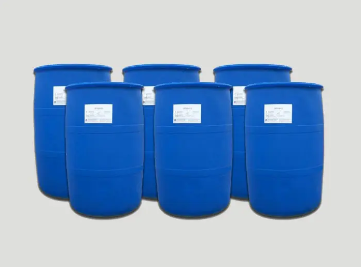
Surfactants are a class of chemical substances with strong interfacial activity and penetration ability, which are often used in pesticide synergists, sprays and regulators in agriculture. With the continuous improvement of agricultural production technology and the demand for sustainable agricultural development, the application prospects of surfactants in agriculture are becoming more and more broad. This article will explore the application prospects of surfactants in agriculture from the perspectives of improving pesticide effects, improving pesticide application, reducing pesticide residues, and protecting the environment.
First, surfactants can improve the effect of pesticides. Pesticides themselves are unstable when attached to the surface of crops and are easily affected by soil or climatic conditions, resulting in poor application effects. Adding an appropriate amount of surfactants can form a uniform and stable liquid film, enhance the adhesion of pesticides on the surface of crops, extend the effective period of pesticides, and improve the utilization rate of pesticides. In recent years, some studies have shown that after adding surfactants, the disease prevention and control effect of pesticides is significantly improved, and some common agricultural pests and diseases can be effectively controlled, such as rice planthoppers in rice and cotton bollworms in cotton.
Secondly, surfactants can improve the application of pesticides. There are many ways to apply pesticides, such as spraying, seed soaking, coating, irrigation, etc. Different pesticide application methods have different requirements for surfactants. Surfactants can adjust the surface tension and viscosity of the mixed solution of pesticides and water, improve the wettability and distribution of pesticides, make pesticides evenly distributed on the surface of crops, reduce the loss and waste of pesticides, and improve the effect of pesticide application. In addition, surfactants can also increase the adhesion of pesticides, reduce the loss and residue of pesticides.
Thirdly, surfactants can reduce pesticide residues. Pesticide residues are a common problem, which poses potential risks to human health on the one hand and potential harm to the environment on the other. The application of surfactants can reduce the loss and residue of pesticides, reduce the content of pesticides in agricultural products, and prevent pesticides from polluting soil and water sources, and protect the ecological environment. Some studies have shown that after adding an appropriate amount of surfactants, the amount of pesticide residues in fruits and vegetables can be significantly reduced, effectively ensuring people's needs for healthy diets.
The application of surfactants in agriculture also helps protect the environment. Surfactants can promote the decomposition and degradation of pesticides, accelerate the separation and dilution of pesticides in soil and water, and reduce pollution and harm to the environment. At the same time, surfactants can also reduce the harm of pesticides to non-target organisms and reduce the impact on the ecosystem. Some studies have shown that after adding an appropriate amount of surfactant, the residual time and content of pesticides in soil and water bodies are significantly reduced, with less impact on the surrounding environment and organisms, which helps maintain ecological balance and biodiversity.
In summary, surfactants have good application prospects in agriculture. By improving the effectiveness of pesticides, improving pesticide application, reducing pesticide residues, and protecting the environment, surfactants can improve the efficiency and quality of agricultural production and promote sustainable agricultural development. However, it is worth noting that the use of surfactants must follow scientific and reasonable principles and safety regulations to avoid adverse effects on the ecological environment and human health. In addition, it is necessary to strengthen the research and application of surfactants in agriculture, improve their use effect and promotion rate, so as to better meet the needs of modern agriculture and achieve the goal of sustainable agriculture.